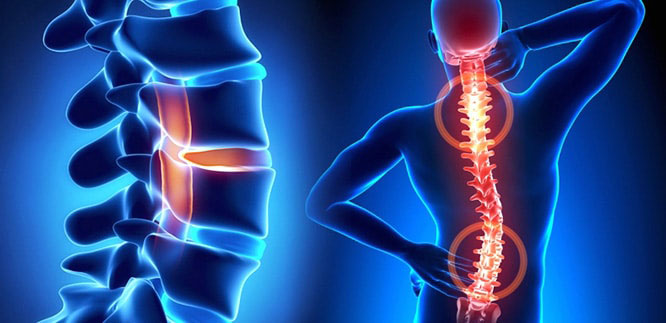


Thoracic Disk Herniations (Chest Spine Herniations)
Thoracic disk herniation is a rare disk condition caused by displacement or rupture of the disks in the thoracic (chest) region of the spine. It occurs much less frequently compared to the lumbar (lower back) and cervical (neck) regions (approximately 1-2% of all disk herniations).
Causes
Degenerative disk disease (age-related wear and tear)
Trauma (falls, traffic accidents)
Spinal deformities such as scoliosis
Heavy lifting, repetitive strain
Symptoms
Symptoms may vary depending on pressure of the herniated disk on the spinal cord or nerve roots:
Back pain (most common symptom)
Band-like pain around the chest (thoracic radiculopathy)
Numbness, tingling, weakness in the lower extremities
Gait disturbances (if myelopathy is present)
Loss of bladder/bowel control (sign of advanced myelopathy – may require urgent surgery)
Diagnostic Methods
Magnetic Resonance Imaging (MRI): Detailed imaging of the spinal cord and disk structures
Computed Tomography (CT): Evaluation of bony structures
Neurophysiological tests (EMG, SEP): To assess nerve conduction
Treatment
Conservative (Non-surgical):
Medication (painkillers, muscle relaxants)
Physical therapy and exercises
Epidural steroid injections (in selected cases)
Surgical Treatment:
Surgery may be necessary if neurological deficits or myelopathy develop
Thoracic discectomy: Removal of the herniated disk
Microsurgical or endoscopic methods: Less invasive options
Prognosis
Asymptomatic thoracic herniations are usually monitored
Good outcomes can be achieved with early surgical intervention if neurological symptoms develop
Although rare, thoracic disk herniations require careful evaluation because they can cause serious spinal cord compression. I am always here to provide detailed information if needed.